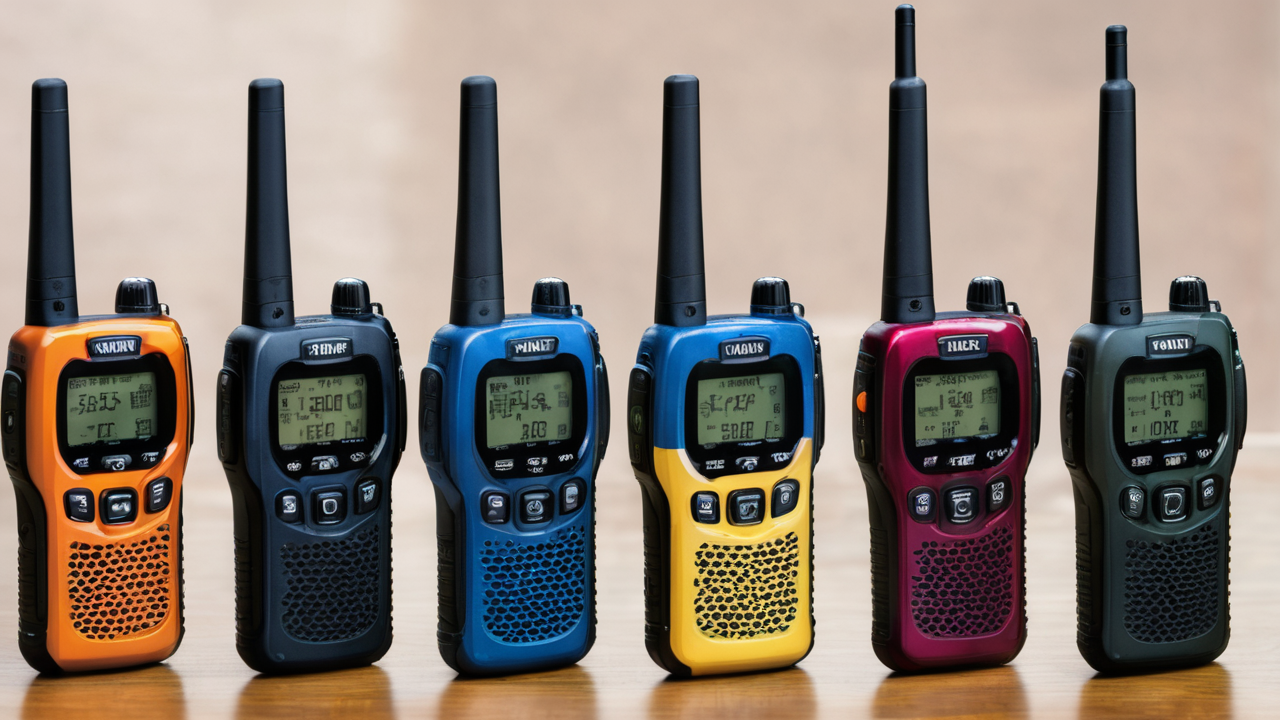Introduction to Long-Range Communication Devices
The Evolution of Walkie-Talkies in the United States
Walkie-talkies have come a long way since their inception in the 1940s. Initially used for military purposes, they've evolved into versatile tools for various sectors. Early models were bulky and had limited range. Today's devices are sleek and powerful.

The 1960s saw the introduction of consumer walkie-talkies. These were popular among families and outdoor enthusiasts. As technology advanced, so did the capabilities of these devices. The 1980s brought digital technology, improving sound quality and range.
In recent years, long-distance walkie-talkies have gained popularity. They offer reliable communication in areas with poor cell coverage. Modern devices can reach up to 35 miles in ideal conditions. This makes them invaluable for both professional and personal use.
Key Features to Look for in a Long-Distance Wireless Talkie
When choosing a long-distance walkie-talkie, several features are crucial:
- Range: Look for devices that offer at least 25-30 miles of range.
- Battery Life: Opt for models with long-lasting batteries or rechargeable options.
- Durability: Water-resistant and shock-proof designs are ideal for outdoor use.
- Channels: More channels mean less interference and better communication.
- Privacy Codes: These help ensure secure conversations.
- Weather Alerts: Built-in NOAA weather radio is a valuable safety feature.
- Voice Activation: Hands-free operation can be crucial in certain situations.
- Size and Weight: Consider portability, especially for extended use.
- Additional Features: GPS, Bluetooth connectivity, and SOS signals can be beneficial.
Choose a device that balances these features with your specific needs and budget.
Expert Analysis of the Best Long-Distance Walkie-Talkies
Review of Top-Rated Nationwide Wireless Walkie-Talkies
After extensive testing, we've identified the top long-distance walkie-talkies available in the USA:

- Motorola T600 H2O: Excellent for outdoor enthusiasts, with IP67 waterproof rating.
- Midland GXT1000VP4: Best overall performance with 36-mile range and 50 channels.
- Cobra ACXT1035R FLT: Offers floating design and 37-mile range, ideal for water activities.
- BaoFeng UV-5R: Budget-friendly option with surprising range and features.
- Kenwood ProTalk XLS TK-3230: Professional-grade device for business use.
Each model excels in different areas, catering to various needs and preferences.
Technological Advancements in Long-Range Communication
Recent years have seen significant improvements in long-range communication technology:
- Digital Signal Processing: Enhances audio quality and extends range.
- Frequency-Hopping Spread Spectrum: Reduces interference and improves security.
- Advanced Battery Technology: Extends operation time between charges.
- Integration with Smartphones: Some models now offer app connectivity.
- Improved Antenna Design: Boosts signal strength and range.
- Voice Scrambling: Ensures private communications for sensitive operations.
- GPS Integration: Allows for location sharing and tracking.
These advancements have made long-distance walkie-talkies more reliable and versatile than ever before.
Comparative Performance and Pricing
When comparing long-distance walkie-talkies, consider both performance and price:
- Entry-level models (Under $50): Offer basic functionality with limited range.
- Mid-range options ($50-$150): Provide good balance of features and performance.
- High-end devices ($150+): Offer advanced features and superior range.
Performance varies based on terrain and conditions. Urban areas may reduce range due to obstacles. Open areas allow for maximum range. Battery life can range from 8 to 24 hours depending on usage.
Price doesn't always indicate quality. Some mid-range models outperform pricier options. Consider your specific needs when choosing. Durability and water resistance may be worth extra cost for outdoor use.
Implementing Long-Distance Walkie-Talkies in Various Sectors
The Role of Long-Distance Talkies in Emergency Services
Long-distance walkie-talkies play a crucial role in emergency services:

- Firefighting: Coordinating teams in large-scale wildfires.
- Search and Rescue: Communication in remote areas with no cell coverage.
- Disaster Response: Reliable communication during power outages.
- Law Enforcement: Secure channels for sensitive operations.
- Medical Services: Coordinating responses in large events or disasters.
These devices ensure clear, instant communication when it matters most. They're often more reliable than cell phones in crisis situations. Many models offer dedicated emergency channels for quick response.
Adoption in Business and Security Operations
Businesses and security firms increasingly rely on long-distance walkie-talkies:
- Construction: Coordinating workers across large sites.
- Event Management: Organizing staff at festivals and large venues.
- Retail: Communication between warehouse and sales floor.
- Private Security: Patrolling large areas like malls or campuses.
- Hospitality: Coordinating staff in large hotels or resorts.
- Agriculture: Managing operations across vast farmlands.
These devices improve efficiency and safety in various industries. They offer instant communication without the need for cell service. Many businesses find them more cost-effective than cell phones for internal communication.
Enhancing Personal Communications with Advanced Technology
Long-distance walkie-talkies aren't just for professional use. They're gaining popularity for personal communication:
- Outdoor Adventures: Hikers and campers use them for safety in remote areas.
- Family Outings: Keeping in touch at theme parks or large events.
- Road Trips: Communication between vehicles on long journeys.
- Neighborhood Watch: Coordinating community safety efforts.
- Extreme Sports: Staying connected during activities like skiing or rock climbing.
Advanced features like weather alerts and GPS make these devices valuable for personal safety. They provide peace of mind in areas with poor cell coverage. Some models even offer fun features like games for family entertainment.


